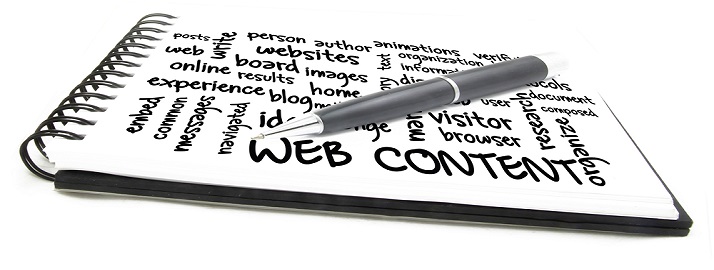 You may have read lots of advice on how to write good copy for your website. Here’s your definitive guide to writing for the web. Here you’ll find out:
You may have read lots of advice on how to write good copy for your website. Here’s your definitive guide to writing for the web. Here you’ll find out:
- Basic principles for writing for the web
- Content for mobile devices: what to consider
Basic principles – your content should:
- Be relevant to your users
- Have a purpose
- Be engaging
- Be easy to read and scannable
- Be accurate and up to date
- Meet accessibility guidelines
1. Be relevant to your users
It’s important to define who you are communicating with, so you can tailor the content to their needs and make it relevant. For example, is the page for an older person, a carer, or a professional? Once you know which user type it’s for, think about their interests, needs and motivations and how they like to receive information (eg a video, a downloadable PDF, text on a page?) and create high-quality content that reflects these principles.
2. Have a clear purpose
As well as providing important, relevant information, in a clear way, most website content usually supports a user to make a decision and/or to take action. One way of doing this is to ensure every webpage answers these three questions:
‘What?’ – this is the basic details of what you’re offering, who it’s aimed at, plus when and how activity is happening.
‘So what?’ – tell your audience why they should care about your offer by being clear about the benefit(s). The best copy describes the benefit in terms of what matters to the audience, so things that are new, generate income or solve a problem are very appealing.
‘Now what?’ – outlines the steps you want the user to take after reading your copy. Some copy is just for information, so doesn’t have a really strong ‘Now what?’ But, most offers we promote require some action, eg downloading an application form, sending an email or turning up at a venue.
Read our advice on writing effective calls to action.
3. Be engaging
Use a friendly, positive tone and don’t go into too much detail unless you’re describing something very technical. For example, a page about volunteering at your Age UK could be quite light-touch, but a page about a specific volunteer role should have more details. Make sure you’re clear and use language that reflects how users (not professionals) would speak about the issue.
4. Be easy to read and scannable
Web users will tend to scan information. Your content needs to be clearly structured and easy to read or scan quickly. Here are some top tips for making sure they can:
- Write a compelling headline that clearly relates to the content. Include a verb, if it’s possible to do.
- Use lists / bullet points to break up the content where possible
- Convey one idea / piece of content per paragraph
- Use short sentences / paragraphs
- Don’t waste words – over-writing / over-explaining loses the reader very quickly
- Use plain English – avoid marketing terms or jargon
In order to make web content easy to read for all users, and especially for those with any accessibility issues, you should write meaningful sub-headings to divide up the text.
To find out more about using headings to help readers with accessibility issues, see our guide on Web accessibility.
5. Be accurate and up to date
It sounds basic, but if your text has out of date information, broken links, spelling and grammar mistakes, or old contact details, it makes your website (and your organisation) look less professional and trustworthy. Check all the details in the copy to make sure they are correct, including statistics, dates, contact details, links and names. If the page has a timescale, for example, if it’s about something coming up, then make a note on your calendar or content plan to delete it or update it when required. Check the spelling and grammar before you publish, or ideally, get someone else to check it for you.
6. Meet accessibility guidelines
You must make sure your content meets accessibility guidelines. See our guide on web accessibility. The guide covers various aspects of how to make your website accessible including how to use headings, how to name links, and the importance of alternative text for images.
Content for mobile devices – what to consider:
Readers who are using a mobile phone or tablet to access your website will generally focus on the top of the screen. They may be on the go or have less time to read carefully and absorb lots of information. If you follow the guidelines above to make your content scannable and easy to read, that will help mobile users in particular.
Remember that mobile devices have smaller screens and usually touch screens so make sure hyperlinks are long enough for people to tap on easily. A link of a single word or several links close together can be tricky to open on a touch screen.
